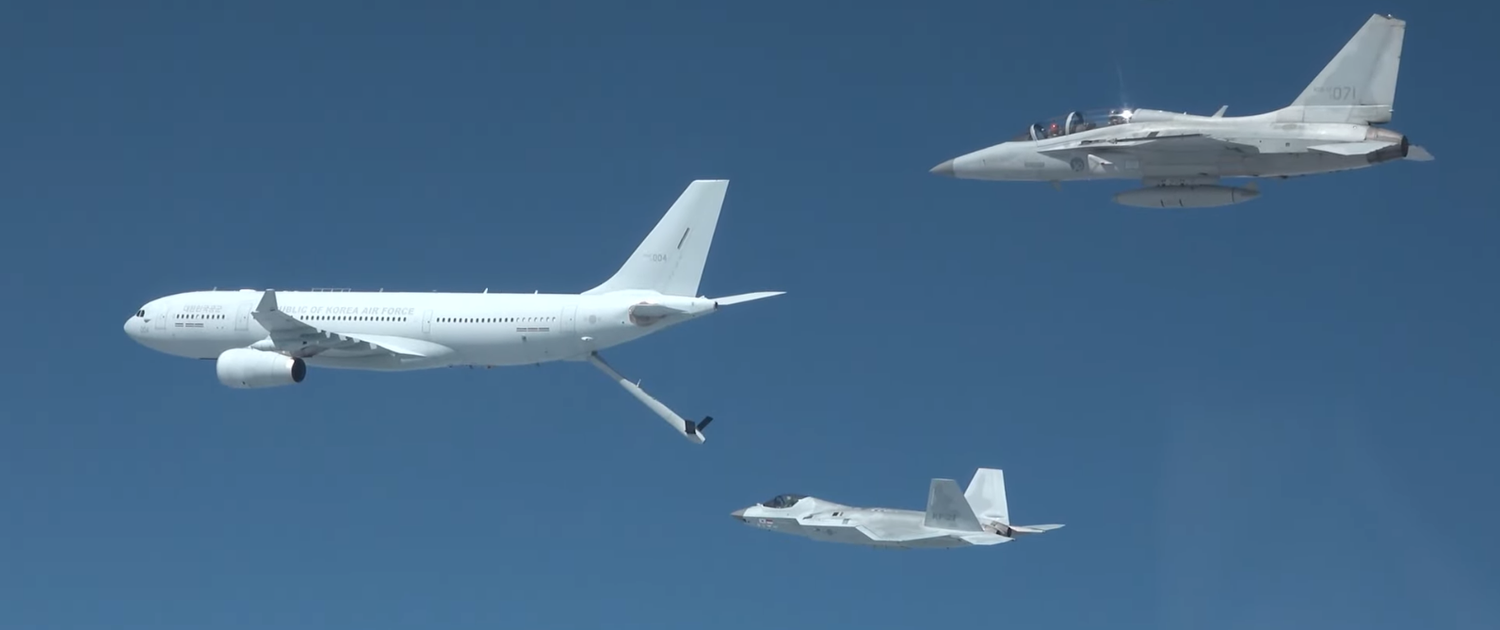KF-21 Boramae performs first in-flight fueling test
Korean Aerospace Industries’ KF-21 Boramae fighter successfully conducted its first in-flight refueling test.
The KAI KF-21 Boramae test program reached a new milestone in its development on March 19, with the first in-flight refueling test. This involved the program’s fifth prototype and a Republic of Korea Air Force (ROKAF) Airbus KC-330 tanker aircraft.
Through the aerial refueling capability, the KF-21 will be able to perform long-range missions, extending its operational radius and loiter time.
Due to the turbulence that occurs during difficult aerial refueling operations, these tests are very important to obtain empirical information on the aerodynamic performance of the aircraft and its interaction with the refueling probe or lance. The systems for safe connection and disconnection with tanker aircraft and fuel transfer, etc., are also evaluated.
See also: German IRIS-T air-to-air missile to be integrated into Korean FA-50 and KF-21 Boramae fighters
The in-flight refueling capability validation campaign will continue with tests in various «flight envelopes» (altitude, speed, etc.).

It is somewhat surprising that Korea Aerospace Industries chose the Flying boom refueling system for the KF-21 instead of the probe-and-drogue method. Each system has its advantages and disadvantages. Flying boom, for example, has a higher fuel flow rate per minute, reducing the time the airplanes are connected. But it also means having to rely on large airtankers (like the american KC-46 Pegasus or the European A330MRTT), whose acquisition and operating costs are higher than those of smaller aircraft, such as the C-130 or C-390, which use the probe-and-drogue method. This choice could have a negative impact on the export profile of the KF-21 (for Air Forces with tight budgets), since it would imply that a potential customer of the Korean novel fighter would also have to acquire a large air tanker if it wants to have the capacity for aerial refueling


Comentarios
Para comentar, debés estar registrado
Por favor, iniciá sesión